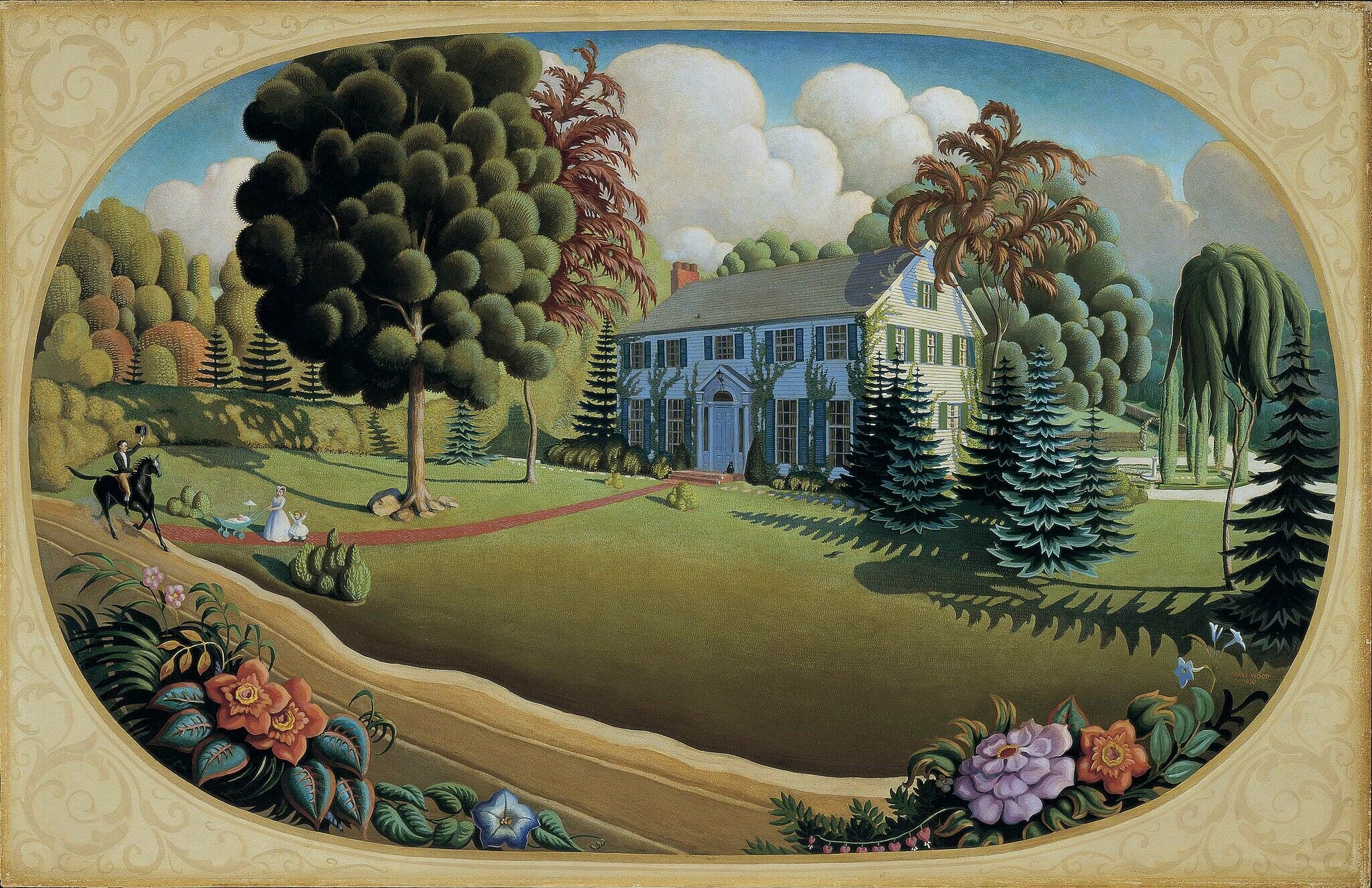Grant Wood: American Gothic and Other Fables | Art & Artists
Mar 2–June 10, 2018
Grant Wood: American Gothic and Other Fables | Art & Artists
Decorative Arts
1
Grant Wood began his career as a decorative artist. Even after he shifted to fine arts, he retained the ideology and pictorial vocabulary of Arts and Crafts, a movement that promoted simplicity of design and truth to materials. To it, he owed his later use of flat, decorative patterns and sinuous, intertwined organic forms as well as his belief that art was a democratic enterprise that must be accessible to the average person, not just the elite.
Wood’s training began early. For two summers after graduating from high school he studied at the Handicraft Guild in Minneapolis before joining the Kalo Arts and Crafts Community, a workshop and training facility for artisans in Park Ridge, Illinois, a suburb of Chicago. In 1914, he opened the Volund Crafts Shop with a fellow craftsman and began to receive recognition for his jewelry and metalwork in the Art Institute of Chicago’s prestigious annual decorative arts exhibitions. Nevertheless, commercial success eluded him and he closed the shop and returned to Cedar Rapids in 1916 to begin his painting career. The decision did not, however, bring an end to his work in decorative arts, which he continued well into the 1930s.
Overmantel Decoration, 1930
Painted in the same year as American Gothic, Overmantel Decoration was part of the decorative scheme for the neocolonial home Wood designed for Mr. and Mrs. Herbert Stamats, a local Cedar Rapids publisher and his wife. Placing large painted panels, usually of landscapes, over the fireplace was common in the eighteenth and early nineteenth centuries. In depicting the Stamats family strolling in old-fashioned dress in front of their brand-new home, Wood drew on sources as varied as Currier and Ives lithographs, his mother’s willowware china platter, and family photo albums to create a fanciful scene of pre-industrial America that speaks to his romance with the world of his childhood of the 1890s.

